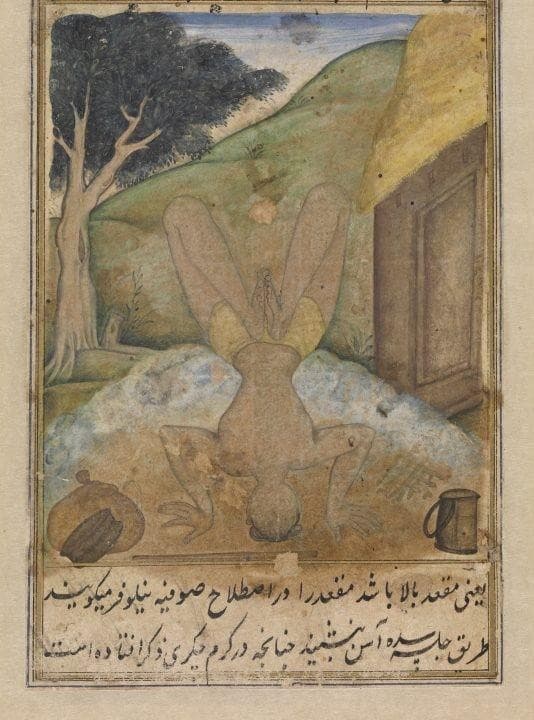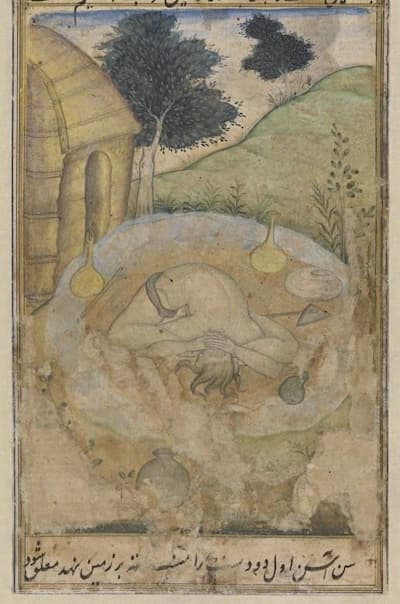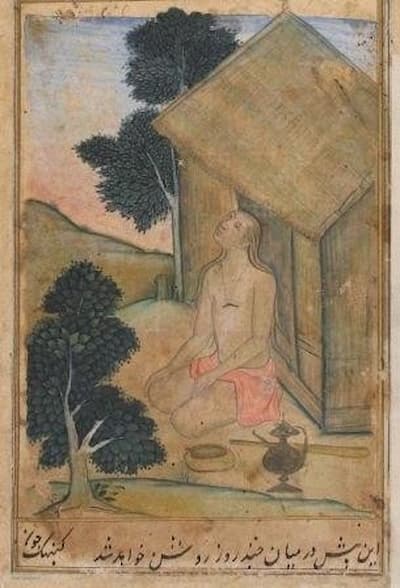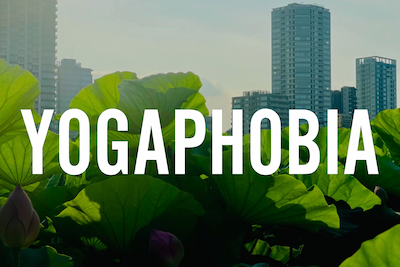· History · 1 min read
Akūnchan Practice — The Waterlily Pose
The earliest paintings of non-seated poses (asanas) appear in the Persian Bahr al-Hayat manuscripts, written in Gujarat in approximately 1550 by Muhammad Ghwath Gwaliori...

The translation describes this image as part of akūnchan practice or, in Sufi terminology waterlily (nīlūfar). “The waterlily is the house of fire, and the place where the breath comes out.” Upside down, the practitioner creates a feeling of pulling the waterlily up by the feet. “A kind of fire appears that burns up all impurities. All unaccustomed food will turn to ash.”
The earliest paintings of non-seated poses (asanas) appear in the Persian Bahr al-Hayat (Ocean of Life) manuscripts, written in Gujarat in approximately 1550 by Muhammad Ghwath Gwaliori (var. Gwaliyari).
Illustrated folio of the Bahr al-Hayat, a Persian Sufi yoga treatise.
Watercolor on Paper, 1600 - 1604, Trustees of the Chester Beatty Library, Dublin, Ireland.
Carl W. Ernst has translated the Ocean of Life from seven manuscript copies, a translation which is available at the Smithsonian, National Museum of Asian Art site.
This is a faithful photographic reproduction of a two-dimensional, public domain work of art. The work itself is in the public domain in its country of origin and other countries and areas where the copyright term is the author’s life plus 100 years or fewer.
Interested in learning more? Contact us or try a class.
Overland Park, Kansas
Almost always online, from anywhere.


